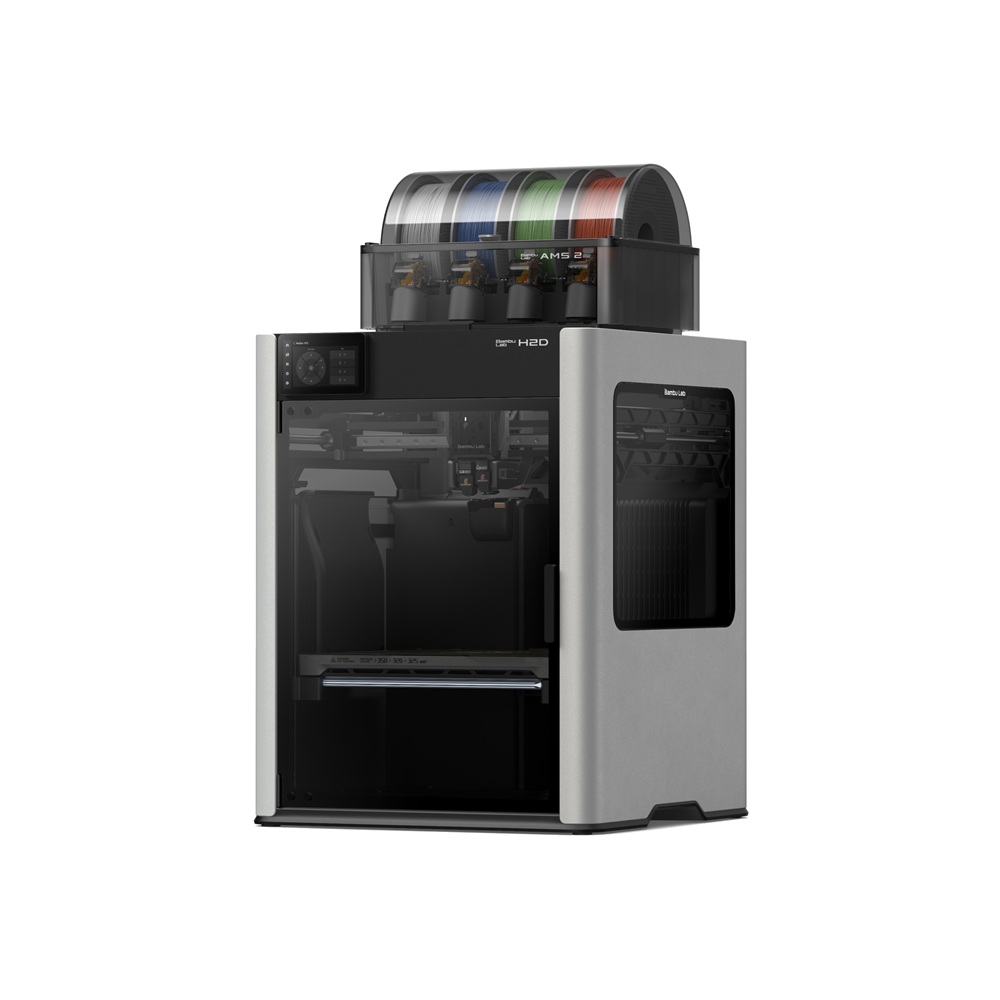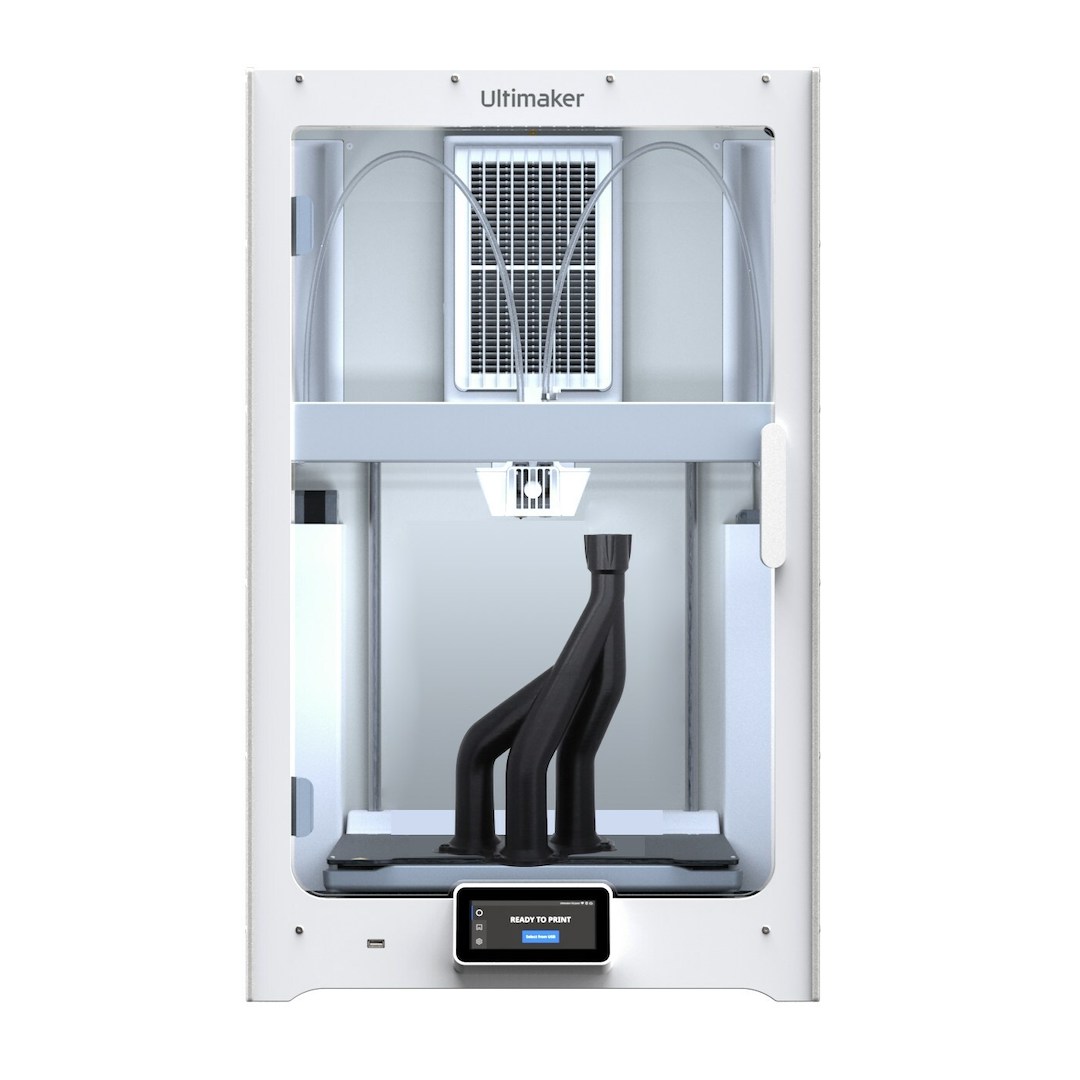Compare H2D vs S7
Comparison between the best 3D printers
Choose the best 3D printer at the best price. The cheapest 3D printers are here.
Buy a 3D printer here with 3D Fila.
 |
 |
|
| Model | H2D |
S7 |
| Printing Material | Filament | Filament |
| Buy Filament for Bambu Lab H2D | Buy Filament forUltimaker S7 | |
| Estimated price | $1899,00 | $8300,00 |
| Manufacturer | Bambu Lab | Ultimaker |
| Release Year | 2025 | 2022 |
| Print Volume [mm] | 350x320x325 | 240x330x300 |
| Printer Size [mm] | 492x514x626 | 585x495x800 |
| Weight [kg] | 42,3 | 29 |
| Power Loss Recovery | YES | YES |
| Enclosed printer | YES | YES |
| Bed Leveling | Automatic | Automatic |
| Filament End Sensor | YES | YES |
| Bed type | Heated | Heated |
| Power supply system | Direct Drive | Bowden |
| Standard nozzle | 0,4 | 0,4 |
| Maximum Nozzle Temperature [°C] | 350 | 280 |
| Maximum Bed Temperature [°C] | 120 | 120 |
| Maximum printing speed [mm/s] | 600 | 180 |
| Filament holder | YES | YES |
| Camera for supervision | YES | YES |
| Recommended filaments | PLA, PETG, ABS, ASA, TPU, PVA, Nylon (PA) | PLA, ABS, PETG, PC, Nylon, Tritan, PP |
| Recommended slicers | Bambu Studio | Cura |
| Maximum Resolution [mm] | 0,01 | 0,1 |
| Processor | ||
| Display | Touchscreen 5'' | Display touchscreen 4,7'' |
| Power Supply | 500 W | |
| Connectivity | Wifi, Bambu bus, Cartão SD | USB / Wi-Fi |
| Operating systems | Windows, Mac, Linux | Windows, Mac, Linux |
| Date of registration in the system | 2025-03-31 | 2023-01-28 |
| Release date | 2025 | 2022 |
| Extra features | Bambu Labs H2D combines high-speed 3D printing with a chamber heated up to 65 °C, dual extrusion with automatic nozzle switching, an AMS for filament drying and exchange, and AI sensors that detect failures. It offers optional laser and digital cutting capabilities, features intelligent calibration through computer vision, vibration control, enhanced fire safety, and real-time camera monitoring. | The UltiMaker S7 printer features a series of technological innovations to enhance 3D printing. It incorporates a flexible, magnetic build plate with PEI coating, promoting better adhesion and easier part removal. Its new inductive sensor significantly improves bed leveling, ensuring perpendicular and accurate prints. In addition, the S7 has a higher quality camera for remote monitoring, an integrated air filter, and uses a unique glass door to maintain a constant temperature in the print chamber. The machine is also compatible with the expansion kit for metal printing. |
| Support for multiple colors and materials (AMS and CFS) | YES | NO |
Notes * |
||
| Cost-benefit | 7 / 10 | 1 / 10 |
| Hardware | 8 / 10 | 4.2 / 10 |
| Tela | . | . |
| Print volume | 4 / 10 | 4 / 10 |
| Performance | 5 / 10 | 1 / 10 |
Conclusion |
| In comparing the Bambu Lab H2D and the Ultimaker S7, several key aspects emerge that highlight their differences and potential uses based on price, performance, and features. The **Bambu Lab H2D** offers a more advanced technology profile with features like high-speed printing capabilities, a heated chamber, dual extrusion with automatic nozzle switching, and advanced failure detection through AI sensors. Its larger print volume and higher maximum print speed make it ideal for users looking for efficiency and versatility in their projects. Additionally, the inclusion of smart features such as an enhanced camera for supervision and intelligent calibration significantly enhance the user experience and print quality. On the other hand, the **Ultimaker S7**, while also incorporating solid design elements like a flexible build plate and improved bed leveling, falls short in terms of maximum performance benchmarks compared to the H2D. Its additional features, such as an integrated air filter and compatibility with a metal printing expansion kit, cater to specific users who might prioritize safety and breathe easier during long print jobs. However, the S7 comes at a considerably higher price point, which may not justify the benefits it offers, particularly for casual users. Ultimately, the **Bambu Lab H2D** stands out as a more cost-effective choice with a higher overall performance rating, suitable for both professionals and enthusiasts seeking speed and versatility in their 3D printing endeavors. The **Ultimaker S7**, while offering some quality and innovative features, does not provide the same value when considering its price and the performance criteria. Therefore, for users looking to maximize their investment in 3D printing technology, the H2D emerges as the clearer winner in this comparison. |

